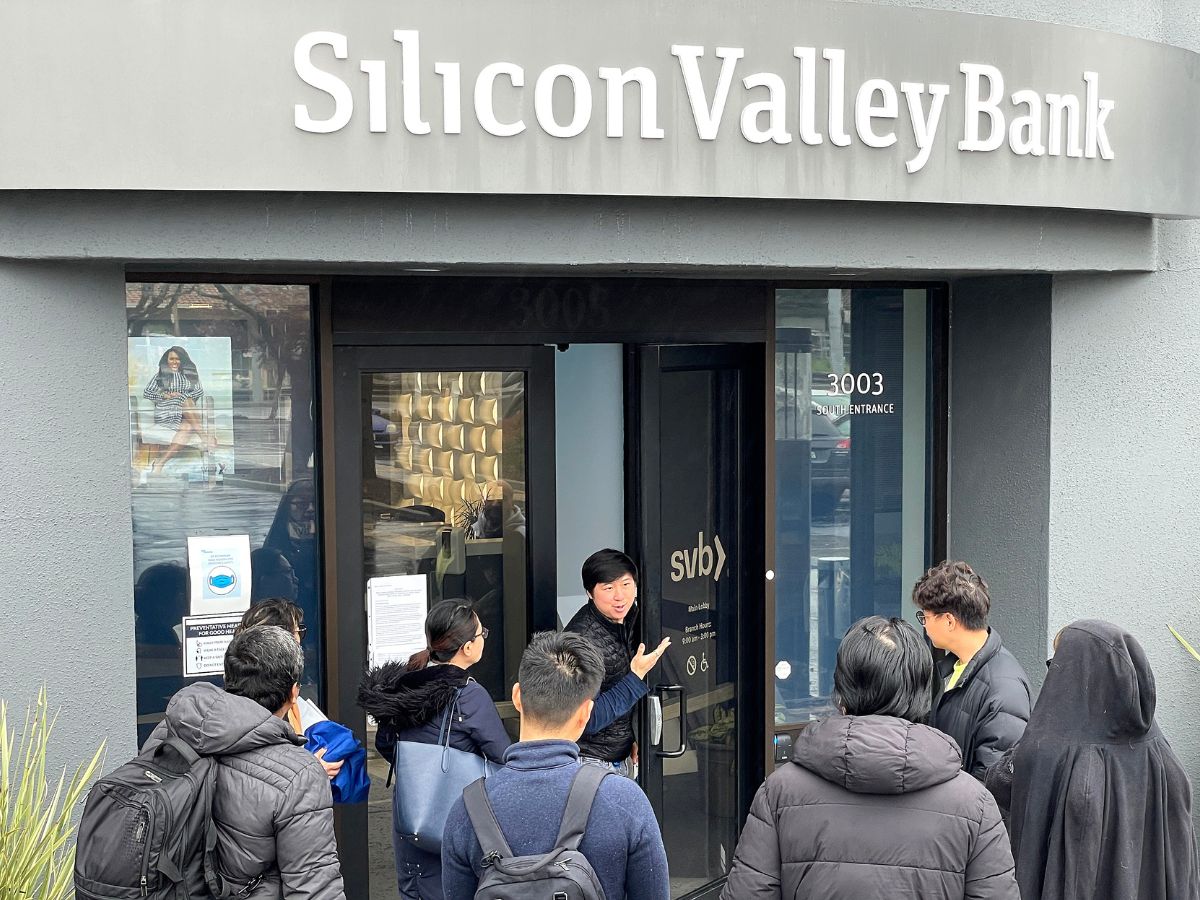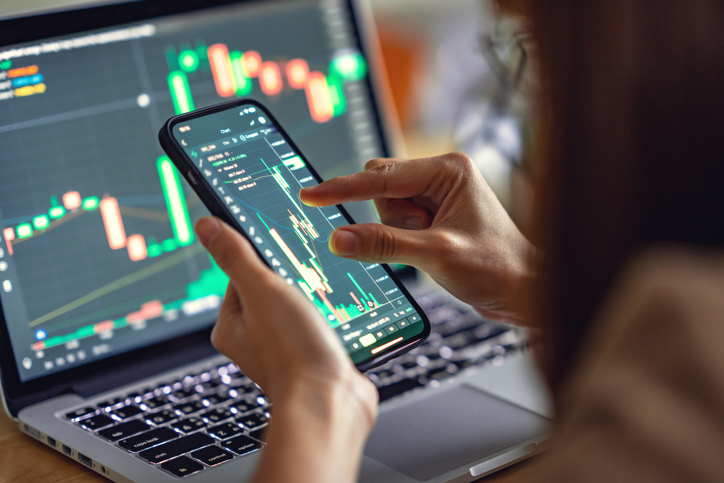Banks and blockchain have not always been the best of friends. It’s understandable: Crypto has long been touted as a complete replacement for the existing banking infrastructure with which we are all familiar (and often frustrated). But the merits of transparent and decentralised systems are becoming too obvious to ignore, and banks have stepped up their efforts to integrate and adopt the best of blockchain to ensure their own survival.
The systems that we have in place are relics of an older world, a world in which you’d head to the bank on Thursday after work to deposit your paycheck, which came in physical form: cash or cheque. These legacy systems – which have repeatedly proven themselves to be insecure, opaque, and unfair – are struggling to keep pace with the rate of change. Processes that worked fine 25 years ago are now too slow and clunky to react as quickly as they now need to.
Bank runs brought down FTX’s fraudulent empire a little over a week after concerns first emerged, and Silicon Valley Bank’s recent collapse (the second largest in US history) took just 48 hours.
In a world where trust in traditional institutions is waning, blockchain technology promises to revolutionise the way we interact with one another.
Banks and Blockchain: The Fundamental Advantages
Banks are beginning to recognise the merits of blockchain systems. Citibank’s March 2023 Global Perspectives and Solutions report argues that the “tokenization of financial and real-work assets could be the killer use case driving blockchain breakthrough… [T]okenization [is] expected to grow by a factor of 80x in private markets and reach up to almost $4 trillion in value by 2030.” And by 2030, “up to $5 trillion of Central Bank Digital Currencies (CBDCs) could be circulating in major economies in the world, half of which could be linked to distributed ledger technology.” That’s an estimated $6.5 trillion of value secured and enabled by blockchain technology within seven years.
Meanwhile, the interbank messaging system SWIFT is working with Web3 service provider Chainlink to explore the integration of traditional financial systems with blockchain technology. This would enable SWIFT messages to instruct on-chain token transfers, helping the SWIFT network become interoperable across all blockchain environments.
The advantages of blockchain-based systems are baked into the underlying technology itself. In traditional financial markets, companies release financial statements to investors once per quarter, just four times a year. In decentralised finance (DeFi), which is powered by blockchain technology, a platform’s balance sheet is updated every time a new batch of transactions is added to the chain. This can be as often as every few seconds.
The operations of a lending platform like Aave – which operates as a kind of DeFi-native money market – are completely transparent and visible on-chain. Users can check the solvency of the platform for themselves. This is built into protocols from the ground up; it’s simply how DeFi works. Blockchain is secure and transparent by design.

Banks and Blockchain: Centralisation
This stands in stark contrast to centralised organisations like FTX and SVB. Users who deposited funds to FTX had no idea that their money was being fraudulently used against the platform’s terms of service. While there is no indication of fraud at Silicon Valley Bank, customers had little insight into the investments the bank was putting their deposits toward, and thus no ability to make an informed decision about the risk they were taking on.
Blockchain has solutions to both of these problems. Decentralised exchanges (DEXs) offer billions of dollars of liquidity without ever requiring traders to give up custody of their assets. The liquidity pools that power these exchanges offer yield to depositors, who can make a determination of the risk they’re willing to take on by examining the protocol for themselves and reading through third-party audit reports. And there is original tooling, like proof of reserves, which has the power to revolutionise bloated and stagnant elements of the financial industry. As the technology continues to develop, the failures of centralised systems and organisations will become clear in the light of the new alternative.
But it’s not enough to just tear down inefficient organisations, we must replace them with something better. We need systems that leverage the disruptive power of technology for good.
Real-World Applications
Already, cryptocurrency provides an alternative for people experiencing hyperinflation or censorship of their local currency. Crypto brings free and fair systems to anyone in the world who has access to the internet. This is a fact that is sometimes overlooked in developed countries, where we take certain structures for granted.
Tamper-proof smart contracts offer incredible opportunities to citizens of countries that lack free and fair commercial and legal institutions. Farmers who depend on their crops for their livelihood can now protect themselves and their families with decentralised insurance, which has been heralded as a godsend for smallholder farmers facing the unpredictable effects of climate change. Only 3% of sub-Saharan African farmers have access to traditional agricultural insurance coverage. Now, 100% of farmers with an internet connection can take out a smart-contract powered policy regardless of whether they have a bank account or relationship with an insurer. More than 7,000 Kenyan farmers did exactly that in the last quarter of 2022.
Their deterministic nature means that the funds held by a smart contract – whether in an insurance policy, money market fund, or liquidity pool – cannot be tampered with against the terms of the agreement. Blockchain systems don’t rely on trust, they back up their promises with objective and verifiable math.

Banks and blockchain: Decentralisation
That’s the power of decentralised systems: they’re open to everyone. They’re transparent by design, and they put power back in the hands of users. We’re working towards a world where you no longer have to sign away all your rights to an impossibly-dense Terms of Service agreement or privacy policy that could change in a second. Instead, you’ll control what you share and who you share it with, and neither party can go back on a deal once they’ve agreed to it.
Certainly, there is work to be done before crypto can serve as a fully-featured alternative to existing systems.
“To be successfully adopted into the mainstream, blockchain needs the help of technology enablers, including (1) decentralized digital identities, (2) zero-knowledge proofs, (3) Oracles, and (4) secure bridges. The legal plumbing also needs to be altered to enable smart legal contracts that will provide a whole new set of rails for global commerce and finance to run on. Regulatory considerations are also necessary to allow adoption and scalability without hindering innovation.”
– Citi GPS March 2023
Security has to be a primary consideration, or else there’s no way that trillions of dollars of value will be ported over to the new system. Decentralised digital identities will give users control over their most sensitive information, while zero-knowledge proofs keep private data private. Oracles greatly expand the functionality of smart contracts, allowing, for example, insurance policies to automatically trigger based on secure and reliable weather data. And bridges tie it all together, ensuring that tokens and value can flow freely across all blockchains so we don’t end up with closed-off, centralised networks that limit the power of the technology.
A Freer, Fairer World
The pace of technological progress is accelerating, and will likely continue to do so. We’re living through the latest chapter in the story that has brought us from the Stone Age to the Information Age, and each of us on earth right now has the opportunity to contribute to writing the next few paragraphs.
To ensure a happy ending to this story, we need to figure out which of our values really matter to us, and which can be left behind. Technology is a tool, and it’s up to us to put it to work.
As with any new technology there are bugs to be ironed out and challenges to be overcome, but the realistic promise of a freer, fairer world is a powerful motivation. It’s a world where agreements are honored, and opportunity isn’t determined by where you were born. It’s the world that we’re working to build.





